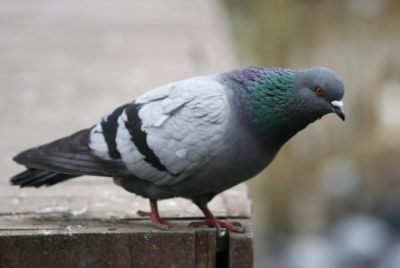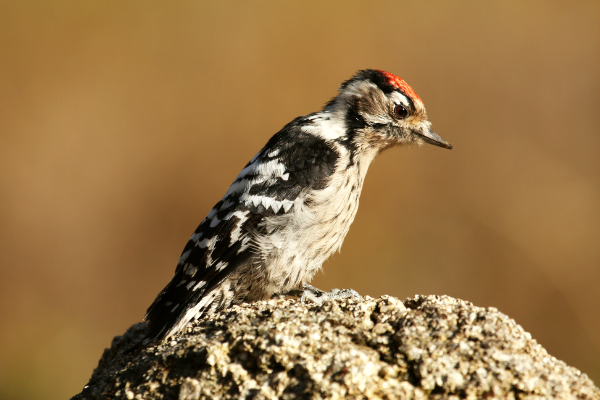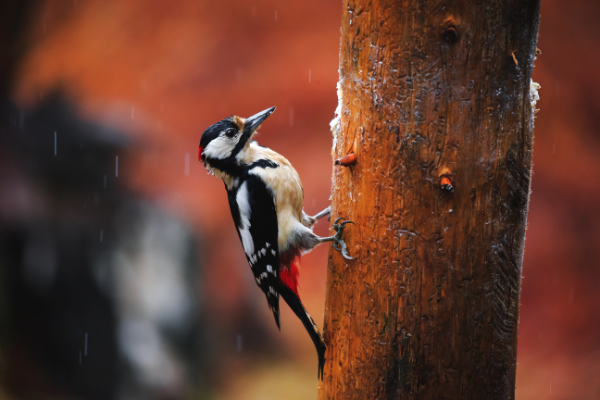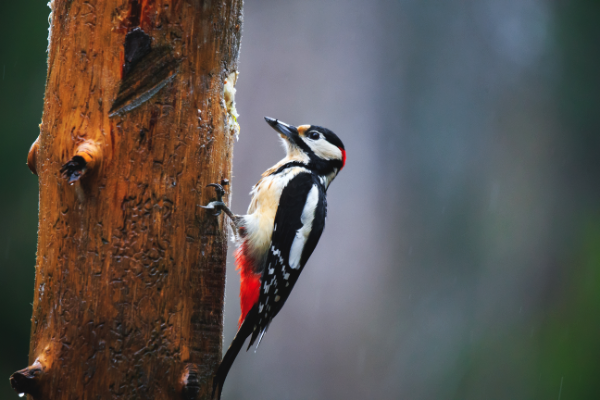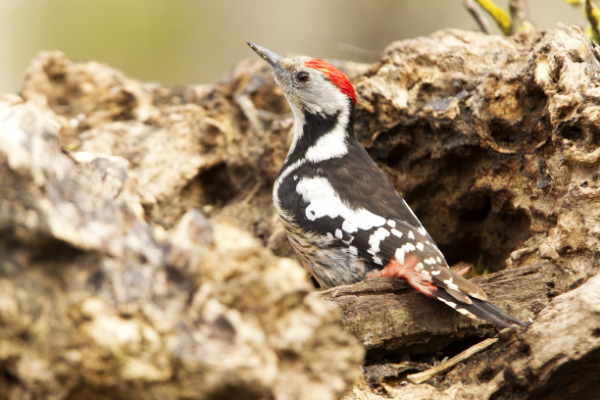Description and Identification
Woodpecker
The Woodpecker belongs to the Picidae family. They are most known for their sturdy and beautiful beak that is used to pick grains of food and to make their nest in the trunk of trees. this species has many other physical appearances that are distinct.
There are more than 200 members of this beautiful family who have different characteristics. More than 20 are domesticated and being used for breeding.
Appearance
Size
Their size varies between different species of woodpeckers. The smallest adult can have a size of about 2.5 inches to 3 inches and weigh up to 7 grams. The largest living species of woodpeckers is the Great Italy Woodpecker, yet still smaller than its ancestors, it can grow up to one and a half feet and weigh more than 500 grams.
Physical Characteristics
Significant variation can be seen in the plumage of woodpeckers from dull to contrasting colors. The most crucial factor is camouflage because it determines the color of the feathers. Depending on the environment, the color of woodpeckers varies from olive to brown with the white, black, or red-colored pattern on it.
Most woodpeckers have a crest or tufted feathers on their crown. Although some species have a clear difference between opposite genders, however, it is challenging to determine the gender of a woodpecker with the help of patterns and colors of plumage.
The woodpecker has four toes in each claw that are very beneficial for their daily activities. The middle two toes face forward while the lateral two face backward, providing a firm grip during any operation. The birds’ co-relation and support of tail and strong short legs with arranged claws help in upright walking and wood pecking.
The bill of a woodpecker, along with its long tongue, completes the specific identity of a woodpecker. The strong, sharp, and long bill helps in digging out the cavity inside a compact object (like wood) to getting food and shelter.
This strong bill consists of three layers. With a complete covering of keratin, the strongest is the outermost layer. The innermost layer has mineralized collagen fiber in a large cavity. Inner and outer layers are combined with the help of the middle layer, which consists of a porous bone that supplies nutrition to both layers. Their long and sticky tongue helps woodpeckers to extract insects and larvae from small holes.
Diet
Woodpeckers are notorious for getting food from the trunk of the tree by using their sturdy beak, and the sound that they make on the wood. Besides getting insects and larvae from under the bark, they are opportunistic in diet behavior. Their omnivore diet includes beetles, larvae, termites, ants, spiders, caterpillars, bird eggs, nestlings, lizards, small rodents, fruits, and nuts. This diversity in food helps woodpeckers survive in different environments.
Behavior
Woodpeckers are solitary birds and often become anti-social. They have been seen to be highly aggressive towards other birds or even birds of their species. Whenever they come across another bird, they start bill-pointing, head shaking, drumming, vocalizing, wing flicking, and chasing to show their aggressiveness.
A main factor in their behavior is the conservation of food sources like a rotten corpse, termite colony, etc. Their nocturnal behavior allows them to prey at dawn and dusk, meanwhile, during the day they roost in the cavities.
There is not a lot of variation in the sounds of woodpeckers. However, they use these calls and sounds to communicate (including courtship behavior), dispute, or give an alarm. Depending upon the species and situation, their sounds can be whistling, low pitched voices, rattles, twittering, etc. Also, their age group can show a difference in their sounds.
Drumming is a common behavior of woodpeckers because this is their way of non-vocal communication. Woodpeckers choose a hollow surface and start beating it repeatedly, this surface can be a tree or some man-made object like a pipe or letterbox. The number of beats per drumming varies according to the woodpecker species and every individual has a specific pattern. This way of communication not only helps to show courtship rituals but to locate mates and neighbors.
Mating Behavior
Woodpeckers either attract their partners by using sound or drumming. Also, some species woodpeckers use dance to attract females. During a dance, the male throws his head back so that its bill has the highest point in the air. After, the male uses a couple of poses to attract the female and repeats these poses.
After successfully making a pair, they start mating. Typical mating behavior includes stretching out of the female and mounting of the male from behind. Females lay a clutch of 4 to 6 eggs which are incubated for 10-14 days. Both parents alternate in guarding the eggs for the nestling period, consisting of 18-35 days. Fully grown birds are then driven out of the parents’ territory.
Habitat
Woodpeckers are usually found in forested areas with lots of trees. Some of their favorite nestling tree ecosystems include scrublands, woodlands, savannas, pine forests, oak forests, and tropical rainforests. With diversity in food taste, they can also live in grasslands and even in deserts.
Instinctively, woodpeckers live in cavities in the trunks of trees, but some species live in nests. They can be found in large numbers in urban areas. Most of them live in tree cavities that are present in parks or cemeteries. Some woodpeckers can also live in the holes of trees that are present on the side of roads, and usually avoid crowded places.
Distribution of Woodpeckers
Woodpeckers have settled all around the globe except Australia, New Zealand, Far East Islands, and Polar regions. Also, these birds are absent from some isolated islands in the ocean; however, some islands have insular species not found in other terrestrial areas. Although species vary according to the region, almost all woodpeckers belong to the Picidae family.
Droppings
Woodpecker poop droppings show the diet of the bird. Like other birds, their dropping consists of an outer covering of uric acid and inner defecated material. By examining their drooping, it has been confirmed that there is a shift in the diet that occurs in different seasons—usually, its drooping consists of the exoskeleton of insects, little wood fibers, and other undigested materials.
Disease: It is quite often stated that pigeon droppings pose a significant hazard for spreading disease. The truth of the matter is that pigeon guano is not any more dangerous than the droppings of any other animal. The problem with the excrement is to people with pre-existing respiratory illnesses that can be exacerbated during the removal process. Disease occurs when the powdered dried feces enter the lungs, where it can cause infection.
Sanitation and Aesthetic Issues: The primary issue with pigeon droppings is the buildup and management problems that are accompanied by it. The affinity of the urban setting to the pigeon, and their tendency to sleep on ledges of buildings, often lead to a buildup of material on storefronts and buildings. Unfortunately for the proprietor of the building, this requires removal and sanitation so that the unsightly droppings don't affect business.
